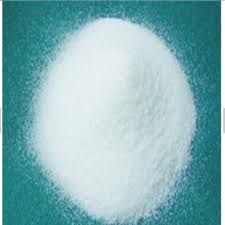
Sodium Pyruvate
Country of Origin : Made in India

Sodium Chlorite
We are offering sodium chlorite.
Packaging Type : Packet
Purity : 80%
Form : Powder
...more
Ribavirin Powder
Application : Antiviral, Interferon
Form : Powder
Packaging Type : Drum
Purity : 98% Min
Application : Sofosbuvir and hepatitis, Chronic hepatitis, Cliver cancer Industry.
Storage : Keep container tightly closed. Keep container in a cool, well-ventilated area.
...more
Reserpine

Rabeprazole Powder
Packaging Type : Drum
Use : Gastroesophageal reflux disease
Physical State : Powder
Storage : Keep container tightly closed. Keep container in a cool, well-ventilated area.
...more
Powder Torsemide
Application : API For Antibiotics
Style : Fresh
Packaging Type : Powder Drum
Physical State : Powder
...more
Norethisterone Powder
Brand Name : TIPL
Application : Menstrual Disorders
Type : API
Storage : Keep container tightly closed. Keep container in a cool, well-ventilated area.
Form : Powder
...more
Nevirapine Powder
Brand Name : TIPL
Form : Powder
Application : HIV/AIDS
Storage : Keep container tightly closed. Keep container in a cool, well-ventilated area.
...more
Neostigmine bromide
Packaging Type : Fiber Drum
Physical State : Powder
Purity : 98% Min
Application : Muscle Disease API
...more
neomycin sulfate powder
Brand Name : TIPL
Form : Powder
Storage : Keep container tightly closed. Keep container in a cool, well-ventilated area.
Use : It is use in antibiotics, hepatic coma and Hepatic encephalopathy Industry.
...more
Ledipasvir Powder
Form : Powder
Packaging Type : Drum
Purity : 98% Min
Use : Hepatitis C and Chronic Hepatitis C, Industry
Color : Off White
Storage : Keep container tightly closed. Keep container in a cool, well-ventilated area.
...more
Betamethasone Valerate
Purity : 98%
Appearance : Solid
Country of Origin : India
...more
automotive coatings

Alpha-Lipoic Acid Powder
Packaging Type : Drum

Alpha Beta Arteether Powder
Application : Antipsychotic API
Physical State : Powder
Application : Sntimalarial
Packaging Type : Drum
Purity : 98% Min
...more
Aciclovir Powder
Appearance : Powder

Acenocoumarol Powder
Purity : 98%

Ferro Alloys
Welding may produce fumes and gases hazardous to health. Avoid breathing these fumes and gases. Use adequate ventilation. See ANSI Z49.1-1967, Safety in Welding and Cutting, published by American Welding Society. The type of welding identified in all companies was electric arc welding and 90% was MIG on mild steel. A total of 42 welders were monitored for personal exposure to welding fumes. Nearly 60% were overexposed to manganese and 19% were overexposed to iron. Two welders from two different companies had the two highest manganese exposures. Both had worked in isolated welding stations.
...more
Low Carbon Ferro Manganese
Welding is a common industrial process - so common that up to 2% of the working population in industrialized countries has been engaged in some sort of welding. Although the types of welding are many, it has been estimated that shielded metal arc welding (SMAW), gas metal arc welding (GMAW) on mild steel, stainless steel and aluminum are performed by 70% of welders. Arc welding causes emission of manganese. Manganese (Mn) is an element that is an essential nutrient, but that can be toxic at high exposures. Mn is ubiquitous in the ambient environment, being present in the soil, water, air, and food. The main source of Mn intake for most individuals is food.
...more
Medium Carbon Ferro Manganese
Manganese, which enters the body primarily via inhalation, can damage the nervous system and respiratory tract, as well as have other adverse effect. Occupational exposures occur mainly in mining, alloy production, processing, ferro-manganese operations, welding and work with agrochemicals. Among the neurologic effects is an irreversible Parkinsonian-like syndrome (Degenerative neurologic disease). A wide spectrum of neuropsychiatric illnesses have been described with manganese toxicity.
...more
High Carbon Ferro Manganese
Manganese deposits in the brain have been described within the basal ganglia of the brain,the cortex and the medulla. Manganese can reduce dopamine in the caudate nucleus, norepinephrine in the hypothalamus, and neuromelanin in the substantia nigra. It appears that manganese may increase dopamine oxidation with associated free radical formation.
...more
Low Carbon Silico Manganese
Manganese is a gray-white metal resembling iron. It is a hard metal and is very brittle, fusible with difficulty, but easily oxidized. Manganese metal and its common ions are paramagnetic. This means that, while manganese metal does not form a permanent magnet, it does exhibit strong magnetic properties in the presence of an external magnetic field. The most common oxidation states of manganese are +2, +3, +4, +6 and +7, though oxidation states from +1 to +7 are observed. Mn2+ often competes with Mg2+ in biological systems, and manganese compounds where manganese is in oxidation state +7 are powerful oxidizing agents.
...more
Medium Carbon Silico Manganese
Manganese has no satisfactory substitute in its major applications, which are related to metallurgical alloy use. In minor applications, (e.g., manganese phosphating), zinc and sometimes vanadium are viable substitutes. In disposable battery manufacture, standard and alkaline cells using manganese will probably eventually be mostly replaced with lithium battery technology. The overall level and nature of manganese use in the United States is expected to remain about the same in the near term. No practical technologies exist for replacing manganese with other materials or for using domestic deposits or other accumulations to reduce the complete dependence of the United States on other countries for manganese ore.
...more
High Carbon Silico Manganese
The origin of the name manganese is complex. In ancient times, two black minerals from Magnesia in what is now modern Greece were both called magnes, but were thought to differ in gender. The male magnes attracted iron, and was the iron ore we now know as loadstone or magnetite, and which probably gave us the term magnet. The female magnes ore did not attract iron, but was used to decolorize glass. This feminine magnes was later called magnesia, known now in modern times as pyrolusite or manganese dioxide. This mineral is never magnetic (although manganese itself is paramagnetic). In the 16th century, the latter compound was called manganesum (note the two n's instead of one) by glassmakers, possibly as a corruption of two words since alchemists and glassmakers eventually had to differentiate a magnesia negra (the black ore) from magnesia alba (a white ore, also from Magnesia, also useful in glassmaking). Mercati called magnesia negra Manganesa, and finally the metal isolated from it became known as manganese (German: Mangan). The name magnesia eventually was then used to refer only to the white magnesia alba (magnesium oxide), which provided the name magnesium for that free element, when it was eventually isolated, much later.
...moreBe first to Rate
Rate ThisOpening Hours